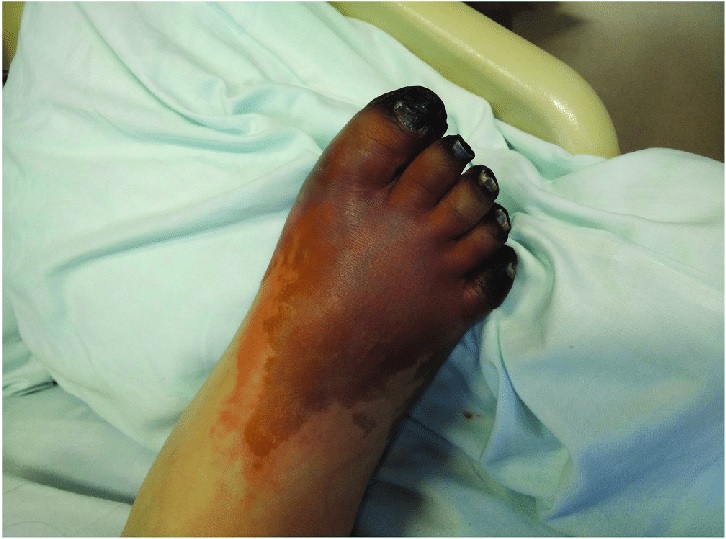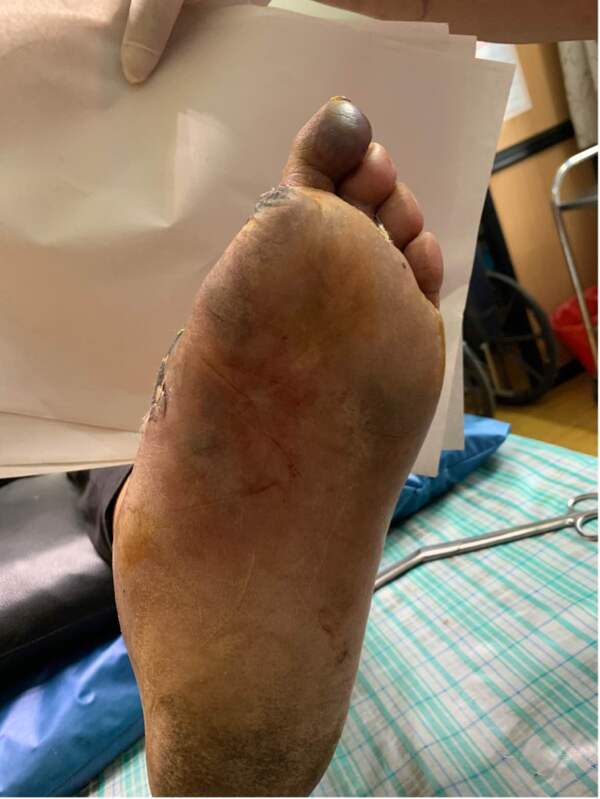Roohealthcare.com – Having a Necrosis foot is not a very desirable thing to have. It is actually quite painful and can be extremely debilitating. This is why you should know what it is, how it occurs and what you can do to prevent it. Symptoms of necrosis foot include a swollen red bump, blisters, and bleeding. These infections are caused by bacteria that live beneath the skin’s surface. It is important to treat them early to avoid complications. The infection may spread to the rest of the body.
Signs Symptoms of Foot Necrosis
Diabetic patients are often afflicted with wounds on their feet. These infections can lead to amputation if not treated properly. The first step in treating a diabetic foot lesion is to make sure that it is cleaned up and protected from the environment. The affected area should be covered with bandages until it heals completely. Avascular necrosis is a condition that occurs when a bone or joint fails to receive adequate blood supply. This condition can affect all bones, including the ankle, knee, and hip. Avascular necrosis can cause serious arthritis in the foot or ankle.
The most common cause of avascular necrosis is a disease that prevents blood flow to the bone. Cancer treatments and radiation therapy can also cause this condition. X-rays and MRIs are used to diagnose this condition. Various factors influence the diagnosis of necrosis foot. The location of the disease may play a part in the limb salvage rate. If the patient has deep wounds, consult the physician.

Depending on the location of the necrosis, surgical interventions may be necessary. The first priority in treating the infected tissue is surgical debridement. After the necrotic tissues are debrided, the next step is antibiotic therapy. Medications such as daptomycin, vancomycin, linezolid, and metronidazole should be administered to treat anaerobic bacteria. The symptoms of avascular necrosis can be very painful. In addition to pain, the affected area can look purple, hot, or shiny. The skin may also appear pierced or blistered. These signs indicate a serious infection.
Surgical Treatment for Avascular Necrosis is Usually Limited
Avascular necrosis can occur in any bone of the foot. It is most often seen in the second metatarsal. If the condition is detected early, it can be managed effectively. If left untreated, it can lead to severe arthritis in the foot or ankle. Surgical treatment for avascular necrosis is usually limited to preventing further bone loss. However, if the damage is severe, surgery may be necessary. Other options include drugs or splints to improve mobility and reduce pain.
The best way to avoid surgical intervention is to prevent infection. Clean and dry bandages can help. In addition, it is important to wash your hands often with soap and water. The area where you have injured yourself should be covered with a clean, dry bandage. If you have a deep or serious wound, you should see your doctor as soon as possible.

Avascular necrosis is a painful condition that may affect your foot, ankle, and joint. It is caused by a loss of blood flow to the bone. This can result in stiffness, difficulty walking, and loss of motion. The condition may also lead to arthritis of the affected joint. If you suspect that you have avascular necrosis, talk to your doctor. They may be able to diagnose the condition and suggest a course of treatment.
Avascular Necrosis can Cause Bone Fragility and Osteoarthritis
Taking care of your foot is important. It is especially important if you are at risk for developing necrosis. Your physician can help you develop good foot-care habits. These practices will not only prevent infections but also promote healing. Avascular necrosis occurs when there is a lack of blood flow to the bone tissue. The most common cause of this condition is an injury or illness that has an effect on the vascular system. Symptoms of avascular necrosis include pain and loss of range of motion. If left untreated, avascular necrosis can lead to bone fragility and osteoarthritis.

The best way to prevent avascular necrosis is to keep your feet clean and dry. You should wash them frequently with soap and water. If you experience a minor wound that is not healing, apply a clean bandage. If the wound is deep or severe, see your doctor. If you are diagnosed with avascular necrosis, your physician may recommend medicines, surgery, or revascularization. These methods will improve the blood flow to the infected area. If you have and want to send articles to roohealthcare, you can visit this page!
Reference :
